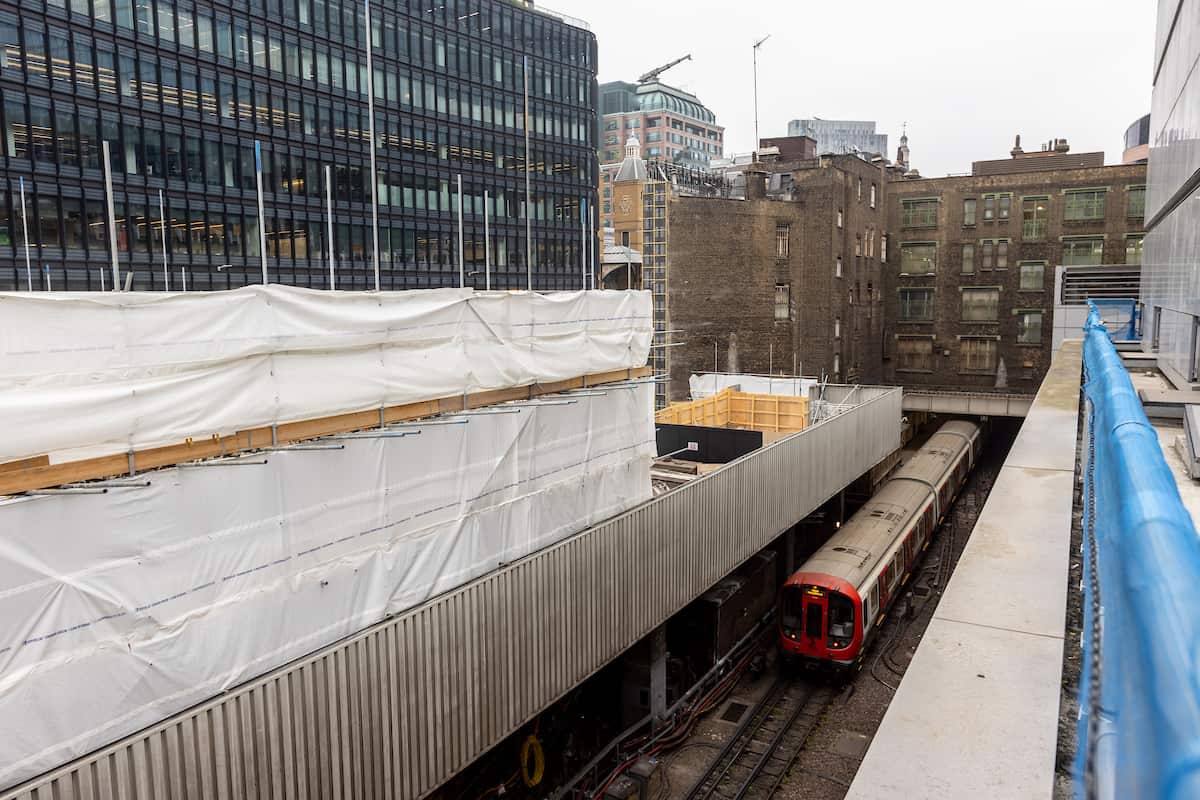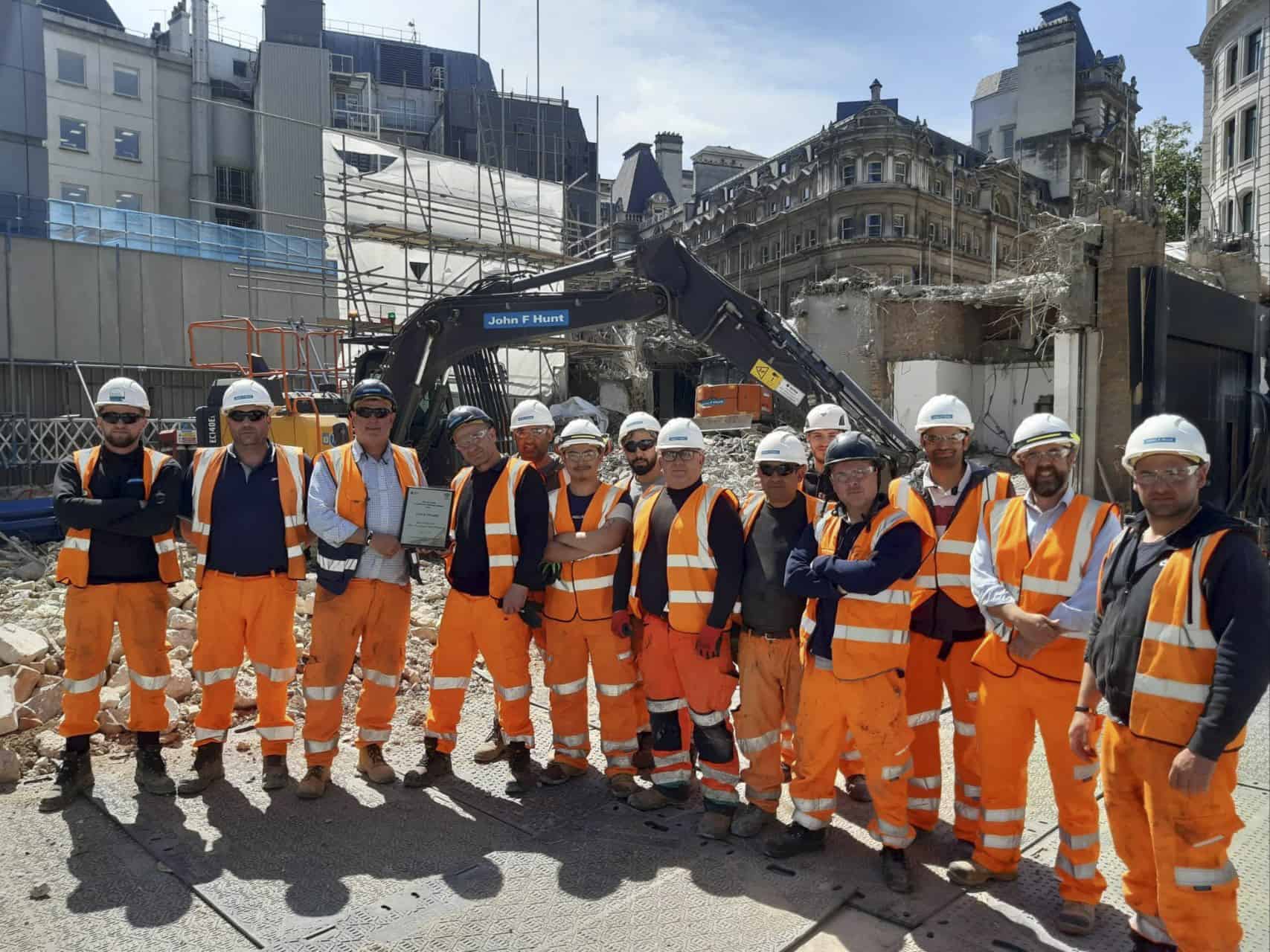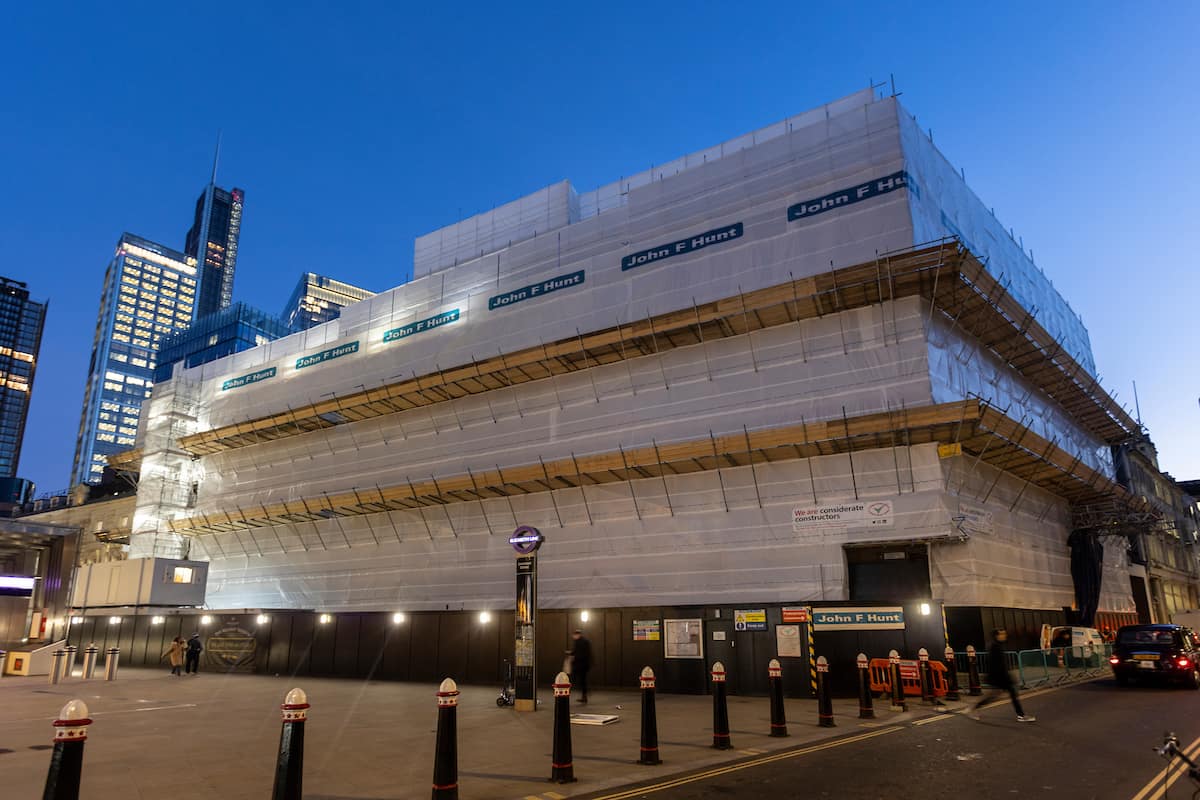1 Liverpool Street, London (Phase 1)
Aviva Investors

18 weeks PCSA, 36 weeks demolition

£31m

London, EC2M
Location & Overview
We worked with client Aviva to deliver this complex project adjacent to Liverpool Street Station in the heart of London. We carried out pre-construction services ranging from extensive surveys, track alignment and detailed methodology through to meetings with TfL, City of London, and Crossrail.
Work, Challenges & Solutions
Asbestos removal and soft strip, followed by demolition of the existing 6-storey building. 40% of the structure’s existing facade overhung the Hammersmith, City, Circle and Metropolitan train lines, requiring a combination of traffic hours and engineering hours of work.
Due to the restricted nature of the site, it was vital that logistics were managed and phased to protect all members of the public using the 3rd busiest station in the country. This required the use of a pit lane with waste curtains for removal directly from within the building.
There were numerous constraints within the basement that had to be mitigated, including LUL signalling equipment, disused Queen Victoria tunnel assets and a UKPN substation. Also, maintenance and protection of a Crossrail below-ground utility corridor, vent shaft and emergency egress route were essential, as was a listed signal room directly adjacent to the existing structure.
Our sequence was coordinated with the maintenance works within this building, centring around a new Signal Equipment Room (SER) and Relay Room, where works were undertaken concurrently with demolition.
Seven other contractors worked within these rooms on night shifts.
Waterproofing of the existing slab was carried out to maintain the weatherproof integrity of the SER and Relay Room during demolition operations.
Enabling works were carried out for the piling and pile matt, including the removal of existing foundations, pile caps and beams using non-percussive methodology due to the proximity of live platforms.
Engaging with Skanska, we constructed a three-storey deep basement with a low defection tolerance of +/- 2mm. This included a secant piled wall 1400mm from the edge of the London underground sleeper.
There were archaeological interests in the project as Mola discovered evidence relating to the Roman, early medieval, medieval, and Post Medieval periods. MOLA uncovered the graves and remains of six human skeletons, a single arm, and a charnel pit containing the remains of seven individuals. Three of the articulated skeletons were found within their original graves and dated to the 2nd century AD.

Achievements
John F Hunt received a City of London Gold award as a part of their Considerate Contractor Scheme in March 2022, recognising that the requirements of the Code of Good Practice had been consistently exceeded. It reflects a spirit of pride, an awareness of the needs of the passing public and regard for the surrounding environment.


